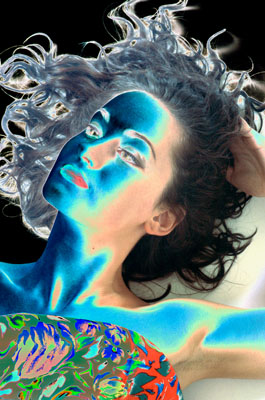 Solarization is a false-colour technique that can works well with particular subjects. Images with good contrast and sharpness are a good starting point. The traditional effect is achieved by exposing a negative in the normal way in an enlarger, and then briefly and uniformly exposing the print to coloured light during the development process. This reverses some of the colours, particularly those in the highlight areas of the image. Other tones remain unchanged. The colour and intensity of the light, and the length of exposure, have considerable effect upon the result.
Solarization is a false-colour technique that can works well with particular subjects. Images with good contrast and sharpness are a good starting point. The traditional effect is achieved by exposing a negative in the normal way in an enlarger, and then briefly and uniformly exposing the print to coloured light during the development process. This reverses some of the colours, particularly those in the highlight areas of the image. Other tones remain unchanged. The colour and intensity of the light, and the length of exposure, have considerable effect upon the result.
Solarization can also be achieved digitally using a "U"-shaped characteristic curve or a filter designed for the purpose. The process is readily variable and can be used to generate all sorts of results.






